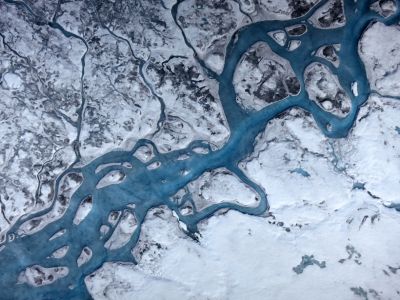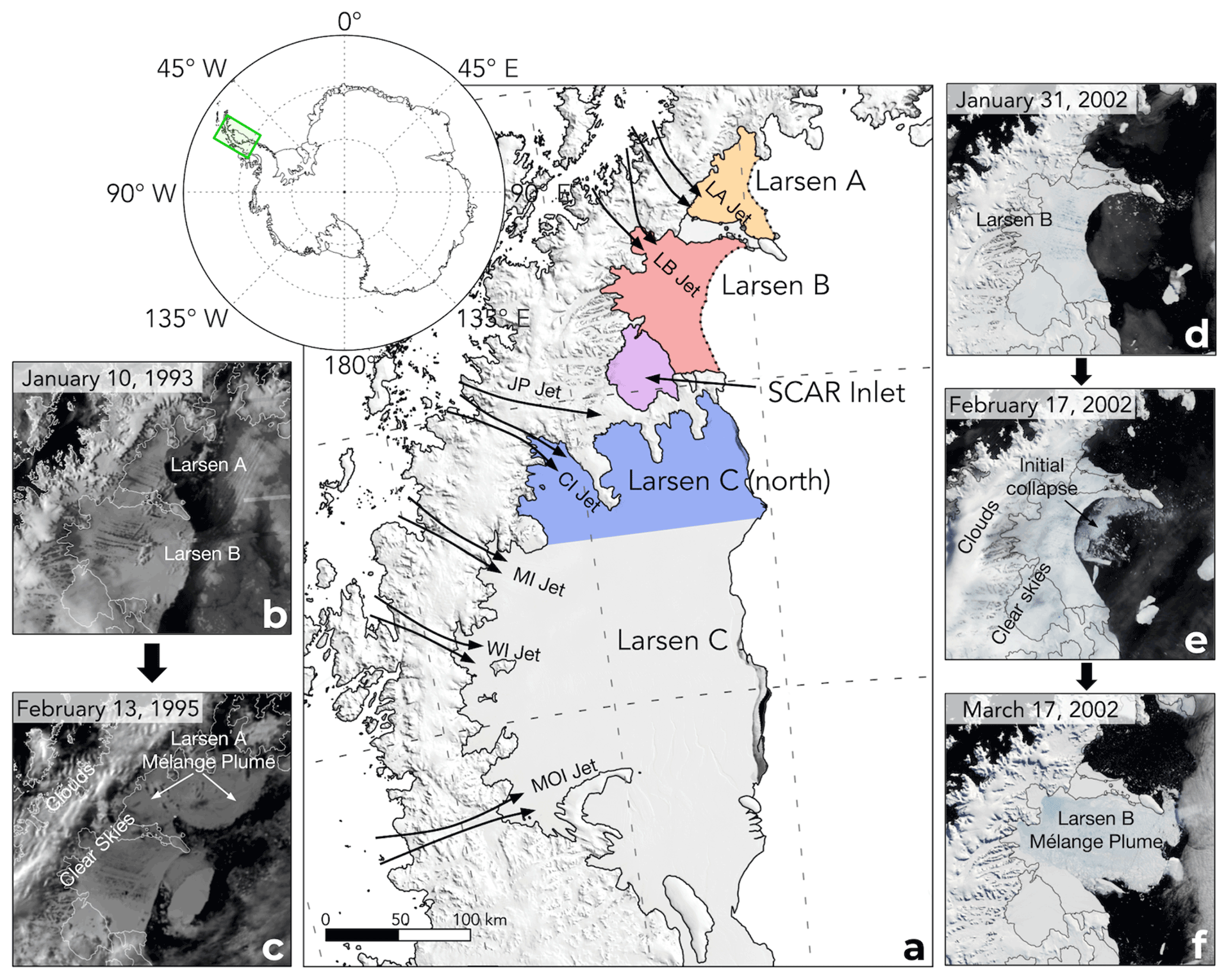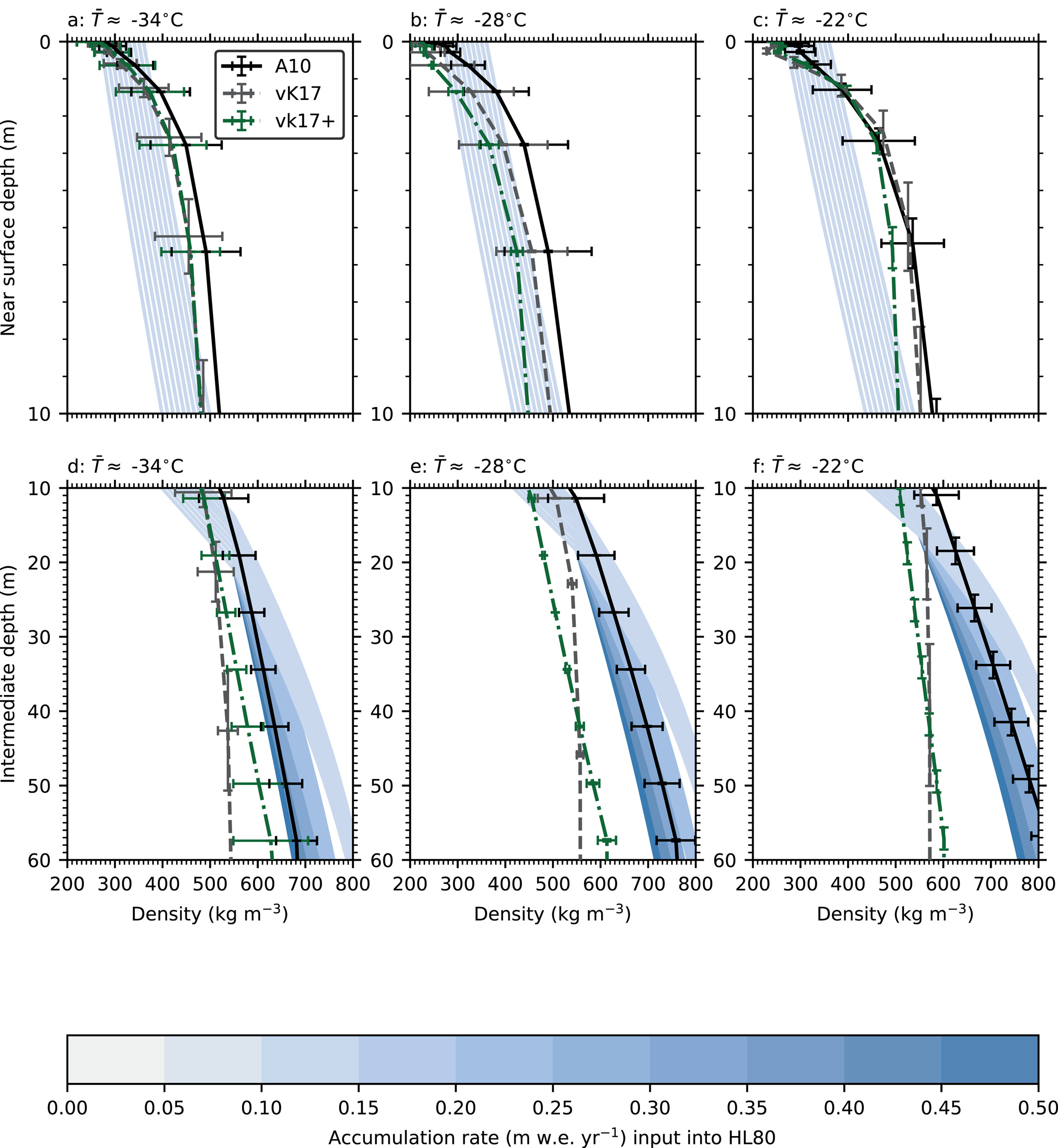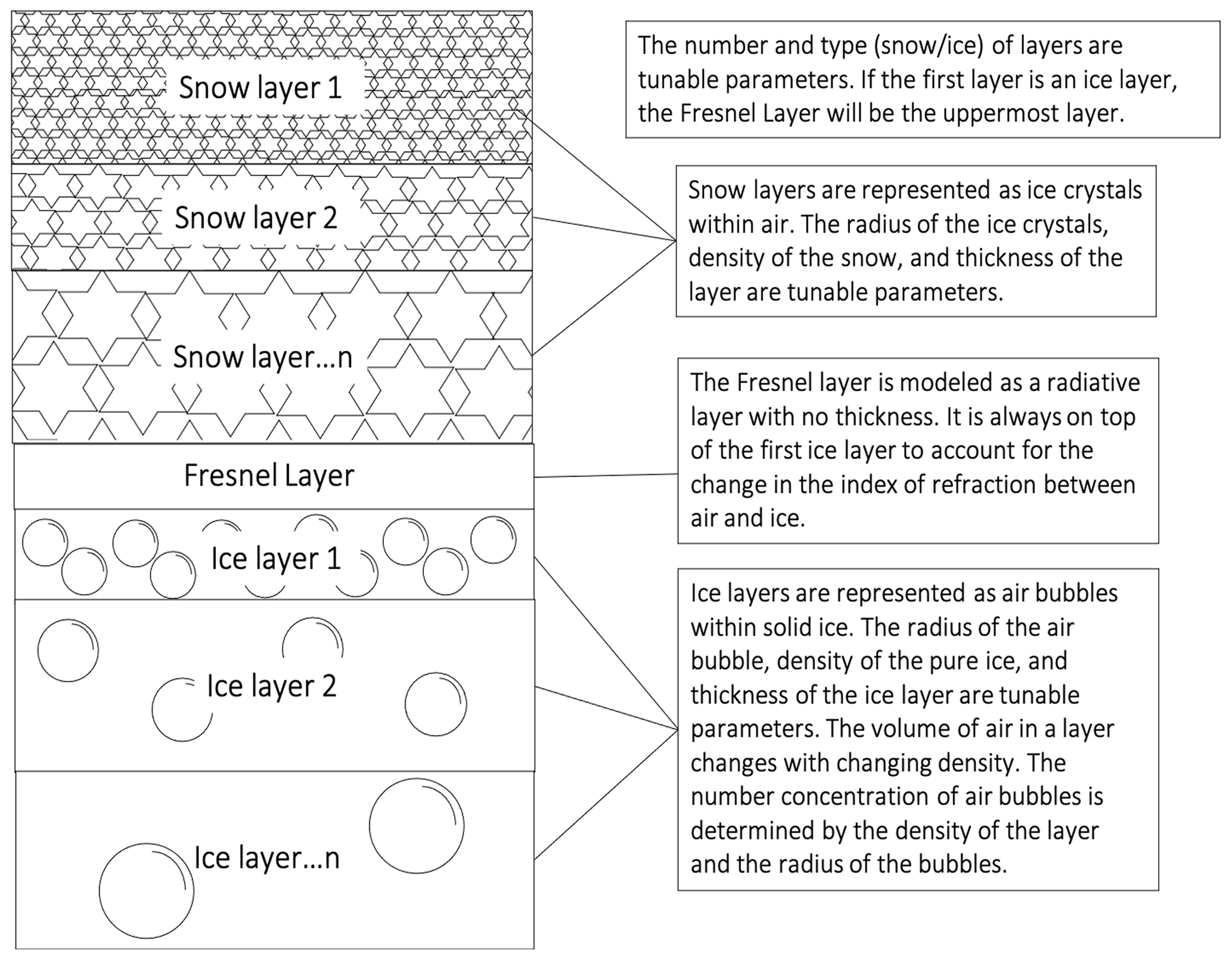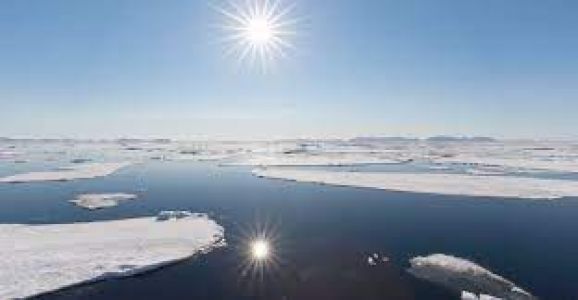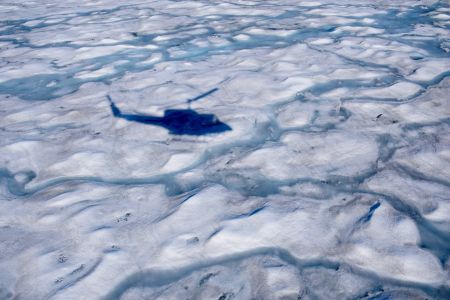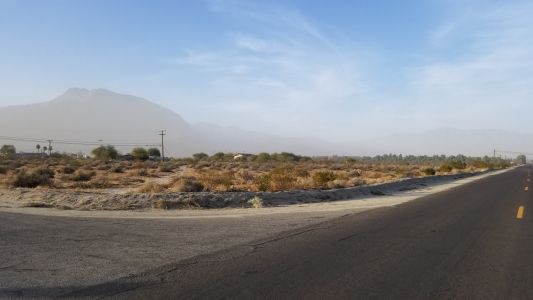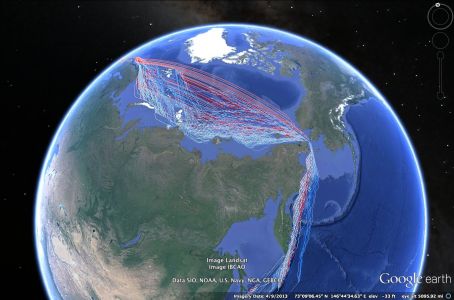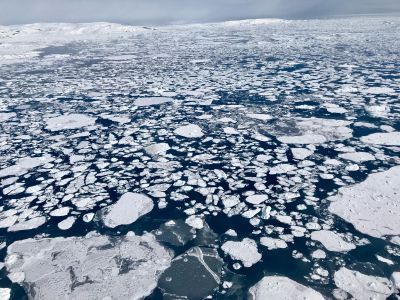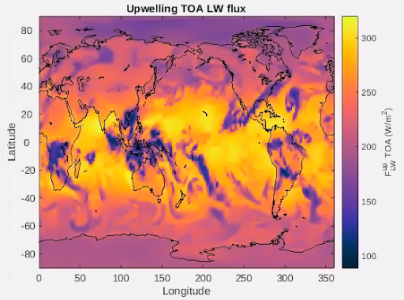About
The Zender Research Group studies the microphysics of trace gas, aerosol, and surface interactions with Earth’s radiative, thermodynamic, and chemical processes. Charles Zender and his team develop and refine the representation of these processes to improve climate prediction. Model simulations, combined with lab, field, and satellite data, help them predict and attribute features of climate and climate change. Current research includes mineral dust and carbonaceous aerosols, snow lifecycle and albedo, aerosol impacts on ocean biogeochemistry, wind-driven surface energy/mass exchange, climate-disease links, and super-dooper-big-scale data analysis. The team’s aerosol, radiative transfer, and data processing models are freely available and are used by geoscientists world-wide.
Research Area: Atmospheric Chemistry, Physical Climate
Research
-
![Aerial photograph taken on 24 July 2015 over the southwest portion of the Greenland ice sheet, Credit: Marco Tedesco.]()
Greenland Bare Ice Albedo Modeling
-
![]()
Wind-driven surface energy/mass exchange
Northern Antarctic Peninsula map by Matthew K. Laffin, Zender, C. S., van Wessem, M., and Marinsek, S. is licensed under CC BY 4.0. -
![]()
Modeling ice sheet climatic mass balance and firn processes
Variation of densities with depth by Adam M. Schneider, Zender, C.S., and Price, S.F. is licensed under CC BY 4.0. -
![]()
Modeling bare ice and glacier algae albedo
SNICAR-ADv4 model schematic by Chloe A. Whicker, Flanner, M., Dang, C., Zender, C., Cook J., and Gardner, A. is licensed under CC BY 4.0. -
![]()
Atmospheric Sensitive to a Spectrally Resolved Surface Albedo
-
![]()
Greenland’s Surface Melt
-
![]()
Evaluating, Modeling, and Attributing Particulate Matter Air Quality in Borrego Springs
-
![]()
Climatic Responses to Future Trans-Arctic Shipping
-
![]()
Spectrally Resolved and Surface Type Dependent Longwave Emissivity in Sea Ice Modeling
-
![CA Whicker-Clarke]()
Greenland Bare Ice Albedo Modeling
-
![]()
Wind-driven surface energy/mass exchange
Northern Antarctic Peninsula map by Matthew K. Laffin, Zender, C. S., van Wessem, M., and Marinsek, S. is licensed under CC BY 4.0. -
![]()
Modeling ice sheet climatic mass balance and firn processes
Variation of densities with depth by Adam M. Schneider, Zender, C.S., and Price, S.F. is licensed under CC BY 4.0. -
![]()
Modeling bare ice and glacier algae albedo
SNICAR-ADv4 model schematic by Chloe A. Whicker, Flanner, M., Dang, C., Zender, C., Cook J., and Gardner, A. is licensed under CC BY 4.0. -
![]()
Atmospheric Sensitivity to a Spectrally Resolved Surface Albedo
-
![]()
Greenland’s Surface Melt
-
![]()
Climatic Responses to Future Trans-Arctic Shipping
-
![]()
Evaluating, Modeling, and Attributing Particulate Matter Air Quality in Borrego Springs
-
![]()
Bias reduction in Earth System Models via improved representations of longwave emissivity
People
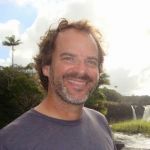
Charlie Zender
Charlie Zender
I am a physicist who studies climate to help piece together the climate puzzle so that as people alter Earth, intentionally or not, we better understand the likely outcomes. Rapid changes like vanishing snow and ice, blowing dust, and burning forests fascinate me most, because fast processes often indicate pressure points to which Earth is sensitive. Recently we discovered that nothing heats the planet faster than the pollution that darkens snow. This has helped spur the policy shift to reduce soot emissions. My current research includes desert dust and fire-emitted soot particulates, snowpack lifecycle, reflectance, and emission, wind-dispersal of nutrients and pathogens, wind-drag effects on deserts and oceans, wind-induced melt, and ice shelf hydrofracture. Better understanding of these processes will improve predictions of dust storms, disease endemicity, seasonal snowpack, and ice shelf disintegration. I also work to accelerate large-scale analysis techniques for data stored in netCDF format which predominates in the geosciences.

Juan Tolento
Juan Tolento
Juan Tolento joined the Zender Group in Fall 2020 after applying through the AGU Bridge Program. Broad research interests lie in radiative transfer models. More specifically, he hopes to be able to make improvements in how models treat shortwave radiation over cryospheric surfaces (snow, ice and ocean). The aim is to better constrain the surface energy budget in order to improve surface and atmospheric heating rates, as well as capturing a more accurate snow albedo feedback in Earth system models.
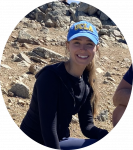
Chloe Whicker-Clarke
Chloe Whicker-Clarke
Chloe is an Associate Project Scientist in the group. Chloe works on improving the representation of snow and ice processes within Earth system models. She studies how bare ice, light absorbing constituents influence the radiative budget of the Greenland Ice Sheet, with a focus on bare ice and snow, glacial algal blooms, and snow and ice melt. Chloe is working to incorporate the radiative influence of various light absorbing constituents and surface melt into the Energy Exascale Earth System Model to understand their contribution to polar warming, Greenland and Antarctic Ice melt, and sea-level rise. More generally, Chloe is interested in how we represent small scale processes within global fully coupled simulations of the earth system. Outside of her research, she spends her time exercising, enjoying the outdoors, and volunteering.

Lili Manzo
Lili Manzo
Lili is a PhD student who joined the Zender Research Group and Earth System Science Department in 2022. She works on refining current the representation of surface emissivity in state-of-the-art atmospheric radiative transfer models. Lili works specifically on frozen and liquid water surfaces, with plans to implement novel methods of representing emissivity over ocean surface in E3SM, an Earth system model. Her work will reduce biases in models, ultimately improving calculations of the Earth’s energy budget.
Group Alumni

Matthew Laffin
Matthew Laffin
Matt is a PhD Candidate in the Earth System Science department at the University of California, Irvine. Matt’s broad interests focus on the Earth’s cryosphere and its many interconnected systems. Specifically, Matt aims to better understand the impact of foehn (warm and dry downslope winds) and katabatic winds have on surface melt and ice shelf stability in Antarctica and Greenland. His work uses an interdisciplinary approach that combines, surface observations, model simulations, data science, and machine learning, with the ultimate goal to help identify impacts of climate change on the Earth system.
Visit my webpage for more info.

Wenshan Wang
Wenshan Wang
I am a research scientist in the Zender Research Group. I am trying to figure out which physical processes contribute the most to the recent acceleration of Greenland’s surface melt using data from automatic weather stations, satellite observations, reanalyses, and model simulations. During my Ph.D., I developed a method to reduce the station-tilt-induced biases in radiation measured by automatic weather stations, a long-lasting issue in in-situ measurements. During my postdoc, I collaborated with a former group member, Ajay Saini, to automate this tilt correction procedure for the community to use: https://github.com/jaws/jaws. I am also interested in simulating the climate effects of increased emissions from trans-Arctic shipping and assessing the shrinking Salton Sea’s impact on the air quality in surrounding residential areas.

Zachary Wolff
Zachary Wolff
I am a PhD candidate in the Earth System Science department at UC Irvine. My research focuses on the longwave energy budget of sea ice and how it can be improved in climate models. My work involves updating the Department of Energy’s Energy Exascale Earth System Model (E3SM) to change from a single broadband solution of longwave energy to a more detailed spectrally-resolved solution in order to include spectrally-resolved and surface type dependant emissivities that are more physically realistic into the model. These updates make the model more physically accurate and we hope will improve the representation of sea ice and the atmospheric processes tied to it in the model.

Adam Schneider
Adam Schneider
I am a physical geographer specializing in cryosphere-climate processes. My focus is on understanding how material properties of snowpack, such as density and albedo, interact with climate and the surface mass balance of the Greenland and Antarctic ice sheets. Our work aims to improve climate predictions by refining the most important cryosphere-climate interactions in the U.S. Department of Energy’s Energy Exascale Earth System Model (E3SM). In developing how E3SM represents these interactions, we learn more about how the surface of Earth’s massive ice sheets will respond to future climate change.

Contact
164 Rowland Hall
University of California, Irvine
Irvine, CA 92697-4675
